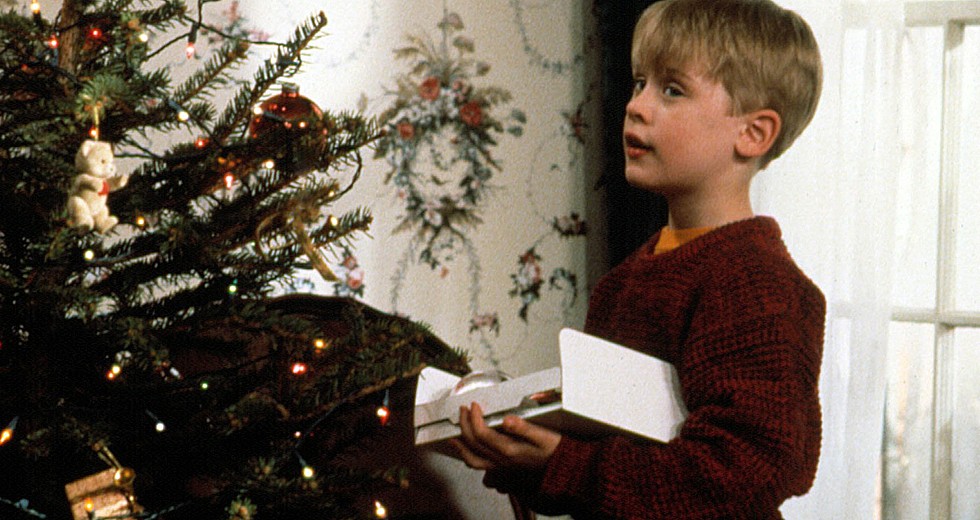
“Home Alone” burst into public consciousness 25 years ago, and its impact is still being felt as cultural touchstone and pop phenomenon. The movie floats and whirls on many levels.
It soared like a rocket in November 1990, opening No. 1 at the box office with a three-day take of $17 million and never let up. Staying atop the box office for an astounding 12 weeks, “Home Alone” eventually earned $286 million (the equivalent, in inflation-adjusted dollars, of roughly $520 million). It remains the highest-grossing live action comedy ever made.
As part of the 25th anniversary engagements for “Home Alone,” members of the Chicago Symphony Orchestra, conducted by Richard Kaufman, will perform the Oscar-nominated score as the full-length movie is screened above the stage for three performances Dec. 11-13.
The CSO run is especially fitting because the movie’s importance to Chicago is almost impossible to overstate. The film preceded the era of states deploying aggressive tax incentives to lure Hollywood productions. The breakout commercial success legitimized the city as an alternate business and artist hub to Hollywood or New York. The film was the genesis of John Hughes, the wildly prolific and highly skilled former ad man turned punk anarchist. Hughes, who wrote and produced “Home Alone,” was formed by the slashing and searing wit of the satirical magazine National Lampoon. His first significant script, adapted from his brittle and deeply disturbing short story, was the iconic “Vacation” (1983) with Chevy Chase.

Kevin (Macaulay Culkin) is menaced by the bumbling bandits Harry (Joe Pesci, left) and Marv (Daniel Stern) in “Home Alone.” | Photo: 20th Century-Fox
Hughes’ directorial debut, “Sixteen Candles” (1984), made a star of Molly Ringwald and demonstrated a candor, emotional vulnerability and observational humor about the inner lives of teenagers that still reverberates today. His early success gave him extraordinary latitude and creative autonomy. By the time of “Home Alone,” Hughes was a one-man conglomerate. On the Saturday night of the movie’s Chicago premiere, Nov, 10, 1990, three other Hughes productions (“Curly Sue,” “Dutch” and “Only the Lonely”) were shooting here simultaneously.
Hughes’ premise about an eight-year child, Kevin McCallister (Macaulay Culkin), left to fend for himself after his parents inadvertently leave him behind as they embark on a family Christmas trip to Paris, tapped into something primal. “Home Alone,” directed by frequent Hughes collaborator Chris Columbus, subverted the fear and dread of childhood isolation by turning Kevin’s picaresque adventure into an act of defiant liberation as he learns to fend for himself, cook and hang out.
Alternately precocious and learned, Culkin became the most famous child star of his generation. The movie’s celebrated set piece of Kevin orchestrating a series of Rube Goldberg traps and defensive maneuvers to thwart the two home invaders Harry and Marv (played by Joe Pesci and Daniel Stern) ratcheted up the movie’s power theme and established a comically bleak level of slapstick humor predicated on violation and pain that linked it to the Hal Roach comedies, and the works of Charlie Chaplin, Buster Keaton and Harold Lloyd.
According to Kaufman, who conducts many of the CSO’s movie presentations, a significant reason for the film’s success and enduring appeal is the score by Hollywood master John Williams, a five-time Academy Award winner. Williams is legendary for his ability to use music as a dramatic leitmotif and capture atmosphere, emotion and tension through his arrangements — the throbbing and pulsing of “Jaws” or the soaring anthem of “Star Wars.”
As a studio violinist, Kaufman played in the recording sessions of several of Williams’ key works such as “Jaws” (1974) and “Close Encounters of the Third Kind” (1977). By chance, Kaufman also was present during part of the “Home Alone” soundtrack recording.
“John is one of those great craftsman when it comes to writing music for film,” Kaufman said. “He can look at a film, a scene and a character, and do exactly what is necessary to either accentuate a character or underscore it in a subtle way. He knows exactly what a film needs and what it doesn’t need. If you listen to a score, the music is always in the right place. The scenes that work without music are allowed to live that way.
“John just has an extraordinary dramatic sense of what a film needs musically.”
Williams’ talent and insights prove essential to the finished work, according to Michael Wilhoit, who was the film’s supervising sound editor. (The sound editor mixes all the sound, except for music.) Wilhoit worked with Williams the year before on Oliver Stone’s Vietnam film, “Born on the Fourth of July” (1989). Working with Chris Columbus, editor Raja Gosnell and John Williams, “We watched a rough cut, meaning the film was edited but without sound effects or music, and we discussed our plan,” Wilhoit recalled. “All the stunts from Harry and Marv are faked. When Marv’s hand sizzles from a hot doorknob, the hand sizzling sounds are added.
“My question to John was how to address the stunts in the house. Does the score play [over] the impacts or does he purposely make room in the score to hear the sound effects.”
Wilhoit suggested that Williams allow breathing room for the sound effects to punctuate the construction of the physical gags. Williams’ eyes immediately lit up at the suggestion. Williams told Wilhoit: “I will write the score up to the moment of impact and let the crescendo be the sound effect.”
“The rest is history,” Wilhoit said.
Patrick Z. McGavin, a longtime film critic and film specialist, is a Chicago-based writer.